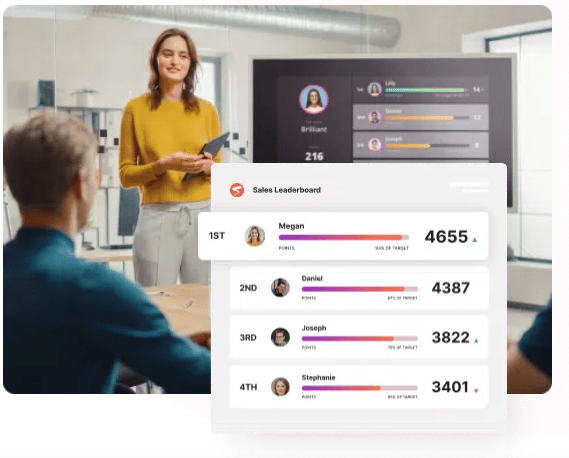In today's competitive business landscape, organizations are constantly looking for innovative ways to drive revenue growth and boost sales performance. One effective strategy that has gained popularity in recent years is the use of sales gamification software. By incorporating game-like elements into the sales process, companies can motivate their sales teams, increase productivity, and ultimately, drive revenue growth. You can navigate to explore https://spinify.com/ innovative sales gamification software solutions.

The Benefits of Sales Gamification Software
1. Improved Sales Performance
- By turning sales activities into a game, sales gamification software can motivate sales representatives to perform better and achieve their targets.
- Leaderboards and real-time feedback allow sales teams to track their progress, leading to increased accountability and performance.
- Rewards and recognition for top performers can further drive motivation and improve overall sales performance.
2. Enhanced Employee Engagement
- Gamification makes the sales process more engaging and enjoyable for sales representatives, leading to higher levels of employee satisfaction and retention.
- Interactive elements such as challenges, competitions, and rewards create a sense of accomplishment and keep employees motivated and invested in their work.
- Healthy competition among team members can foster a collaborative and supportive sales environment, boosting morale and teamwork.
Key Features of Sales Gamification Software
1. Leaderboards
- Leaderboards display real-time rankings of sales representatives based on various performance metrics, fostering healthy competition and motivation.
- Visibility into individual and team performance can drive accountability and encourage sales representatives to strive for excellence.
2. Badges and Rewards
- Badges and rewards can be awarded to sales representatives for achieving specific goals, milestones, or performance targets.
- Recognition through badges and rewards can boost morale, motivation, and engagement among sales teams.
3. Challenges and Contests
- Challenges and contests create a sense of excitement and competition among sales representatives, driving engagement and performance.
- Structured challenges can be designed to align with sales objectives and drive desired behaviors among sales teams.
Case Study: Company X
Background
Company X is a leading technology company specializing in software solutions for businesses across various industries. In an effort to drive revenue growth and increase sales productivity, Company X implemented sales gamification software for its sales teams.
Implementation
Company X integrated a sales gamification platform that included features such as leaderboards, badges, rewards, and challenges. Sales representatives were encouraged to participate in various competitions and challenges to earn rewards and recognition.
Results
- Improved Sales Performance: Sales representatives at Company X showed a significant improvement in their sales performance, with an increase in revenue generated per salesperson.
- Enhanced Employee Engagement: The sales gamification software increased employee engagement and motivation, leading to higher job satisfaction and retention rates.
- Positive Impact on Company Culture: The implementation of sales gamification software fostered a positive and competitive sales culture at Company X, driving collaboration and teamwork among sales teams.
Best Practices for Implementing Sales Gamification Software
1. Set Clear Objectives
- Define clear goals and objectives for implementing sales gamification software, aligning them with the overall sales strategy and business objectives.
- Communicate the objectives to the sales teams to ensure alignment and understanding of expectations.
2. Choose the Right Metrics
- Select key performance metrics that are relevant to your sales goals and objectives, such as revenue targets, lead conversions, or customer acquisition rates.
- Ensure that the chosen metrics are measurable, trackable, and meaningful to drive desired behaviors and outcomes.
3. Provide Regular Feedback
- Offer real-time feedback to sales representatives on their performance and progress towards goals, using leaderboards, dashboards, and performance reports.
- Celebrate achievements and milestones to reinforce positive behaviors and motivate continued performance improvement.
Conclusion
Sales gamification software is a powerful tool that can drive revenue growth, improve sales performance, and enhance employee engagement within organizations. By incorporating game-like elements into the sales process, companies can motivate their sales teams, foster healthy competition, and create a more engaging and productive sales environment. When implemented effectively and aligned with business goals, sales gamification software can have a significant impact on driving revenue growth and achieving sales success.